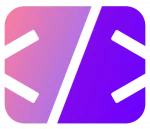Comparative Analysis of Django and Flask: Frameworks for Effective Web Development
Introduction
Django and Flask are two of the most popular web development frameworks in the Python community, each with its unique philosophies and use cases. This article aims to delve deep into both frameworks, providing experienced developers with a clear understanding of their structures, benefits, and ideal use cases. Choosing the right framework can significantly influence the success and scalability of web applications, making this comparison crucial for developers looking to start new projects or migrate existing ones.
Core Concepts and Architecture
Django: Designed to help developers take applications from concept to completion as quickly as possible, Django includes a plethora of built-in features, such as an ORM (Object-Relational Mapping) system, a robust administrative interface, and comprehensive authentication support. This “batteries-included” approach ensures that common web development tasks are straightforward, allowing developers to focus more on writing their app without needing to reinvent the wheel.
Flask: On the other hand, Flask presents itself as a lightweight and flexible microframework, primarily aimed at small to medium applications with simpler requirements. Unlike Django, Flask uses a minimalist approach, providing the bare essentials to get an app running. Developers can then add other components such as form validation, upload handling, or database ORM with extensions as needed. This makes Flask particularly appealing to those who prefer to assemble their tools or need a simpler platform that can be gradually extended.
Ease of Use and Flexibility
Django – Convention Over Configuration
Django adopts a “convention over configuration” philosophy, which means it comes with predefined ways of doing things, which significantly reduces the amount of code developers need to write. For instance, Django’s ORM allows you to define your data models with simple Python classes, and it handles all the database interactions for you. This not only speeds up development but also helps maintain consistency across different projects.
Flask – Explicit is Better Than Implicit
In contrast, Flask provides developers with complete control over their application’s configuration and structure. It operates on the principle that “explicit is better than implicit,” giving developers the freedom to choose how they want things to work. This can lead to more boilerplate code compared to Django, but it also means that Flask is incredibly flexible, allowing for custom solutions that fit exactly the project’s needs. This makes Flask ideal for projects where a bespoke architecture is more beneficial than a standardized one.
Performance and Scalability
When it comes to performance, both Django and Flask are capable of handling high loads, but their architectural choices can influence their efficiency. Flask’s lightweight nature often allows it to run slightly faster in benchmarks, particularly in simpler applications where the overhead of Django’s comprehensive system might not be needed. However, performance can vary significantly depending on the specific use case and how well the application is optimized.
Scalability is another critical aspect where both frameworks excel, but again, their approaches differ. Django’s built-in features, like its ORM and middleware support, can make scaling large applications easier by providing a consistent development pattern. Flask might require more setup and external services to scale up, but its simplicity allows for more flexible scaling strategies, which can be tailored specifically to the needs of the application.
Step-by-Step Installation Guide for Django
1. Prerequisites
Before installing Django, ensure that you have Python installed on your system. Django requires Python 3.8 or higher. You can check your Python version by running:
python --versionIf you need to install Python, download it from the official Python website or use a package manager specific to your operating system.
2. Setting Up a Virtual Environment
Virtual environments allow you to manage dependencies for different projects by creating isolated spaces. This isolation prevents conflicts between project dependencies and ensures that each project has its own set of libraries, independent of the libraries in other environments.
Why Use a Virtual Environment?
- Isolation: Keeps your project’s dependencies separate from other projects and from global Python packages. This means that changes in one project’s environment don’t affect others.
- Dependency Management: Each virtual environment can have its own version of packages, which is crucial when different projects require different versions.
- Consistency: Ensures that all developers working on a project use the same packages and versions, which helps to avoid the “it works on my machine” problem.
python -m venv myenv
source myenv/bin/activate # On Windows use `myenv\Scripts\activate`3. Installing Django
With the virtual environment activated, install Django using pip:
pip install django4. Creating a Django Project
Once Django is installed, you can create a new project by running:
django-admin startproject myproject
cd myproject5. Running the Development Server
To make sure everything is set up correctly, run the Django development server:
python manage.py runserverVisit http://127.0.0.1:8000/ in your browser to see the Django welcome page.
Step-by-Step Installation Guide for Flask
1. Prerequisites
Like Django, Flask requires Python. Ensure Python 3.8 or higher is installed on your machine.
2. Setting Up a Virtual Environment
Using the same steps as for Django, set up a new virtual environment for your Flask project:
python -m venv myenv
source myenv/bin/activate # On Windows use `myenv\Scripts\activate`3. Installing Flask
With your virtual environment active, install Flask using pip:
pip install flask4. Creating a Simple Flask Application
Create a new Python file named app.py and add the following code:
from flask import Flask
app = Flask(__name__)
@app.route('/')
def home():
return 'Hello, Flask!'
if __name__ == '__main__':
app.run(debug=True)5. Running the Flask Application
Run your Flask application with:
python app.pyYou can then access your application at http://127.0.0.1:5000/ to see the greeting “Hello, Flask!” displayed.
Advanced Django Code Example: Small Blog Application
Let’s dive into an advanced Django example that involves creating a small blog application. This will include models, views, URLs, and templates, providing a comprehensive overview of Django’s capabilities. This example will assume that you already have Django installed and a project created.
1. Setting Up Models
First, we need to define the models that will represent the blog posts and comments. These models will be stored in models.py of your app (let’s assume your app is named blog).
from django.db import models
from django.utils import timezone
from django.contrib.auth.models import User
class Post(models.Model):
title = models.CharField(max_length=200)
text = models.TextField()
author = models.ForeignKey(User, on_delete=models.CASCADE)
created_date = models.DateTimeField(default=timezone.now)
published_date = models.DateTimeField(blank=True, null=True)
def publish(self):
self.published_date = timezone.now()
self.save()
def __str__(self):
return self.title
class Comment(models.Model):
post = models.ForeignKey(Post, related_name='comments', on_delete=models.CASCADE)
author = models.CharField(max_length=200)
text = models.TextField()
created_date = models.DateTimeField(default=timezone.now)
approved_comment = models.BooleanField(default=False)
def approve(self):
self.approved_comment = True
self.save()
def __str__(self):
return self.text2. Admin Interface
You’ll need to register these models in the Django admin site to manage them easily. Update admin.py in the same blog app:
from django.contrib import admin
from .models import Post, Comment
@admin.register(Post)
class PostAdmin(admin.ModelAdmin):
list_display = ('title', 'author', 'published_date')
@admin.register(Comment)
class CommentAdmin(admin.ModelAdmin):
list_display = ('author', 'approved_comment', 'created_date')
list_filter = ('approved_comment', 'created_date')
actions = ['approve_comments']
def approve_comments(self, request, queryset):
queryset.update(approved_comment=True)3. Creating Views
Now, let’s define the views in views.py to handle displaying and interacting with blog posts and comments:
from django.shortcuts import render, get_object_or_404
from .models import Post, Comment
def post_list(request):
posts = Post.objects.filter(published_date__lte=timezone.now()).order_by('published_date')
return render(request, 'blog/post_list.html', {'posts': posts})
def post_detail(request, pk):
post = get_object_or_404(Post, pk=pk)
return render(request, 'blog/post_detail.html', {'post': post})
def add_comment_to_post(request, pk):
post = get_object_or_404(Post, pk=pk)
if request.method == "POST":
author = request.POST.get('author')
text = request.POST.get('text')
comment = Comment(post=post, author=author, text=text)
comment.save()
return redirect('post_detail', pk=post.pk)
return render(request, 'blog/add_comment_to_post.html', {'post': post})4. Configuring URLs
Next, set up URL patterns in urls.py of your blog app:
from django.urls import path
from . import views
urlpatterns = [
path('', views.post_list, name='post_list'),
path('post/<int:pk>/', views.post_detail, name='post_detail'),
path('post/<int:pk>/comment/', views.add_comment_to_post, name='add_comment_to_post'),
]5. Templates
Finally, you need to create HTML templates for each view. Here’s a simple example for post_list.html:
<!DOCTYPE html>
<html>
<head>
<title>Blog</title>
</head>
<body>
<h1>Blog Posts</h1>
{% for post in posts %}
<div>
<h2><a href="{% url 'post_detail' pk=post.pk %}">{{ post.title }}</a></h2>
<p>{{ post.text|linebreaks }}</p>
</div>
{% endfor %}
</body>
</html>This is a foundational setup for a blog application using Django. It showcases how to use Django’s ORM, views, templates, and admin functionalities to build a full-fledged web application. You can further extend this example by adding user authentication, more sophisticated commenting features, or even AJAX calls for a smoother user experience.
Ecosystem and Community Support
Ecosystem
Django boasts a rich ecosystem with a wide array of third-party apps and tools that extend its functionality far beyond its substantial out-of-the-box capabilities. Django’s “batteries-included” approach means that most common tools and libraries are already included or easily integratable.
Flask, being a microframework, starts with the bare minimum but supports a vast selection of extensions that allow developers to add features as needed. This can be both an advantage and a disadvantage, as it provides flexibility but requires more work to integrate comprehensive solutions.
Community Support
Both frameworks benefit from strong, active communities. Django’s community is one of the largest in the web development world, which means a vast amount of tutorials, guides, and forums are available to help solve almost any problem. Flask’s community, while smaller, is no less committed and provides substantial support through extensive documentation and an active developer base.
This diverse community and ecosystem support make both Django and Flask excellent choices, depending on the project’s specific needs and the developer’s preferences.
Conclusion
With this, Django and Flask come with their advantage and could be the right choice under different circumstances. Django is well-suited for developers who need a full-featured framework that should get them moving quickly with much less worry regarding configuration. Flask is meant for those people who love a small, flexible framework that can be customized as they need it.
In the end, the decision of using Django or Flask will depend entirely on the needs of your projects and how well your team masters both frameworks, as well as what scalable purposes you plan in the future. Both of the frameworks presented have proved their capability to empower from small application to large enterprise solutions






